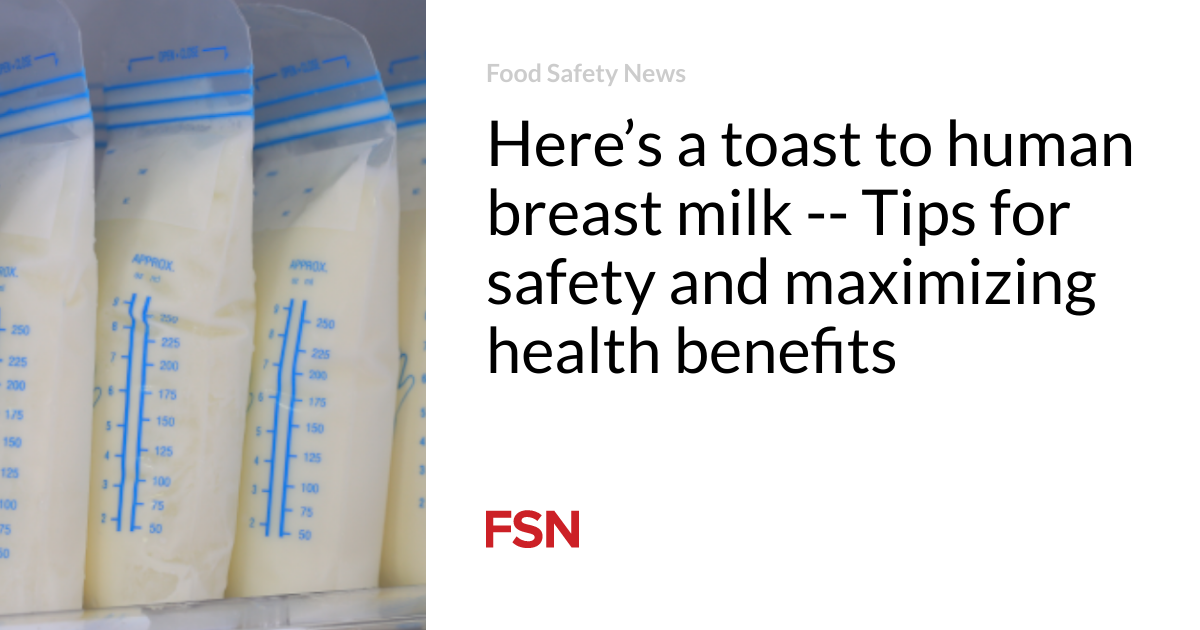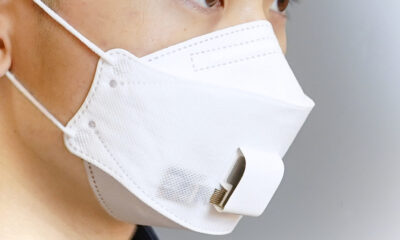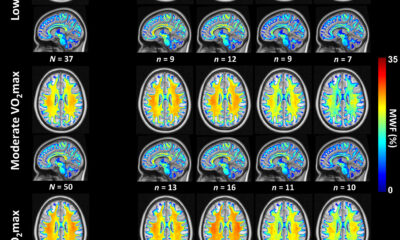Food
Here’s a toast to human breast milk: tips for safety and maximizing its health benefits

Breast milk is universal – it always has been. Whether it’s a poor woman in Africa breastfeeding her baby or a busy career woman in New York City expressing her milk with a pump so she can feed her baby when she gets home from work, mothers everywhere value breast milk for its nutritional benefits it provides. their children – and also because of its other important health characteristics.
According to UNICEF, a United Nations agency, breastfeeding reduces the risk of sudden infant death syndrome (SIDS), childhood diabetes, heart disease and obesity.
In August, the American Breastfeeding Committee (USBC) recognizes National Breastfeeding Month (https://www.usbreastfeeding.org/national-breastfeeding-month.html), by highlighting the reasons why protecting, promoting and supporting breastfeeding is so important to the human life cycle.
But not so long ago, women in ‘modern’ times considered breastfeeding ‘primitive’ and were happy to switch to formula and bottles. In the United States, new mothers left the hospital armed with information about bottle feeding, but without a word about breastfeeding. It was like it was a thing of the past.
But times have changed and in recent years breastfeeding has seen a resurgence as people become more aware of how important it is to infant health.
Currently, the World Health Organization (WHO) recommends exclusive breastfeeding for the first six months of life. The U.S. Dietary Guidelines for Americans recommend that infants be exclusively breastfed for approximately the first six months and then continue breastfeeding while introducing appropriate complementary foods until the child is 12 months or older.
Globally, the percentage of infants under six months who are exclusively breastfed is 48 percent, an increase of 10 percent over the past decade.
Not just the baby
Surprisingly, breast milk is not just food for babies. It is also food for the trillions of microbes that live in babies’ digestive systems and has evolved to promote the growth of microbes that keep babies healthy, recent research shows.
Microbiologist David Mills, University of California-Davis, says the third largest component of breast milk isn’t there to feed the babies – it’s there to feed the microbes.
By this he refers to oligosaccharides from breast milk, complex sugar chains that occur in breast milk. These complex sugars boost the types of gut bacteria that can digest the compounds into short-chain fatty acids—fatty acids that babies need to thrive.
However, there is still more to learn about babies’ digestive systems and the microbes involved.
What about breast pumps?
A breast pump is a mechanical device that breastfeeding women use to extract milk from their breasts so that it can be stored for later use. They can be manual devices or automatic devices powered by electricity.
Breastfeeding women often resort to using a breast pump when they are away from their baby. Going to school or working are examples of this. By using a breast pump, a mother can use the milk to feed her baby at a later date. Breast milk pumped from a mother’s breasts is called expressed milk.
Food safety and breast milk
Pregnant women, infants and young children are among those most at risk of foodborne illness, meaning food handling is particularly important for them. And that goes double when it comes to breastfeeding.
Here are some food safety tips for breastfeeding or expressing expressed milk:
Before expressing your breast milk, wash your hands with soap and water or with an alcohol-based hand sanitizer that contains at least 60 percent alcohol.
Make sure the area where you express your milk is clean. This also applies to the pump parts and bottles.
Breasts and nipples do not need to be washed before pumping.
Date your milk when you freeze it. Store breast milk in the back of the freezer, not in the freezer door. The door is the warmest place in the freezer and you don’t want to unintentionally thaw the milk.
Follow the manufacturer’s recommendations for preparing bottles before filling them with breast milk or formula.
When traveling, transport bottles in an insulated cooler. Perishable items (milk, formula or food) that have been stored outside the refrigerator for more than two hours or without a source of cold should not be used. Cold temperatures prevent most harmful bacteria from multiplying.
Breast milk can be stored for up to 24 hours in an insulated cooler with frozen ice packs while traveling. But once you reach your destination, use the milk right away, store it in the refrigerator or freeze it.
Do not put a bottle back in the refrigerator if the baby does not finish it. Harmful bacteria from a baby’s mouth can enter the bottle during feeding; they can grow and multiply even after refrigeration (some bacteria can grow at refrigerator temperatures) and warming. The temperature required to kill harmful bacteria is extremely high for consumption by a baby.
Warming breast milk
Breast milk does not need to be warmed. It can be served at room temperature or cold. But to warm it up, use hot water by holding the bottle under running tap water until the desired temperature is reached. This should take one to two minutes.
Or heat water in a pan, but do not place the bottle in the pan while you heat the water. Remove the pan from the heat and place the bottle in it until it is warm.
When heating the milk, always shake the liquid to even out the temperature and test it on your hand (not on the wrist, as this is one of the areas least sensitive to heat) before giving it. Milk that is “baby-ready” should feel lukewarm.
Heating breast milk in the microwave is not recommended. That’s because research has shown that microwaves heat baby milk and formula unevenly. This results in “hot spots” that can burn a baby’s mouth and throat.
How do you store breast milk after you have expressed it?
Use breast milk storage bags or clean, food-grade containers to store expressed breast milk. Make sure the containers are made of glass or plastic and have tight-fitting lids.
Never store breast milk in disposable bottle liners or plastic bags that are not intended for storing breast milk.
Freshly expressed or pumped milk can be stored:
•At room temperature (77 degrees F or colder) for up to 4 hours.
• Refrigerate for up to 4 days.
• Freezing for about 6 months is best; up to 12 months is acceptable. For the best quality, it is important to follow the recommended storage times.
If you don’t think you will use freshly expressed breast milk within four days, freeze it immediately. This will help protect the quality of breast milk.
When freezing breast milk, store small amounts to avoid wasting milk. Store in 2 to 4 ounces or the amount offered at one feeding.
Leave about an inch of space at the top of the container because breast milk expands when it freezes.
Go here (https://www.cdc.gov/breastfeeding/php/guidelines-recommendations/faqs.html) for more information about storing and using breast milk.
Cleaning pump equipment
Clean, disinfect, and store pumping equipment, baby bottles, and other feeding items carefully to protect your breast milk from contamination.
Go here (https://www.cdc.gov/hygiene/faq/index.html) for the Centers for Disease Control’s guidelines on how to safely clean and store pumping equipment and baby formula.
(To sign up for a free subscription to Food Safety News,click here)











